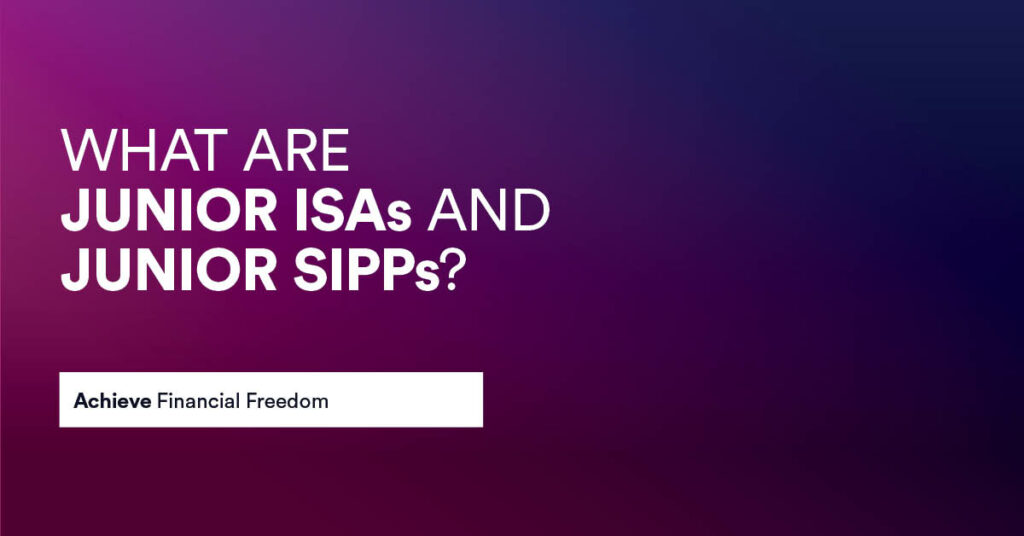I eagerly anticipated the birth of my daughter for two reasons. The first was of course to finally meet her and welcome her into this world. The second was to open up her own personal Junior ISA, so she could achieve those sweet compounding interest gains. Is this true? Yes. Sad? Also yes!
As parents, we all want the best for our children, and setting them off on the right financial path is essential. In the UK, there are numerous options to help you save and invest for your child’s future in a tax-efficient manner. With a minimum of 9 months to plan for the birth of your child, you are in the enviable position of being able to proactively plan your child’s financial journey. Wouldn’t you wish that your parents did the same?
In this article, we will explore the different ways to save for your children’s future, focusing on Junior ISAs and Junior SIPPs, and provide practical advice for parents looking to secure their child’s financial future.
Time is on Their Side
There is literally no better time than the birth of your child to start putting money away for their future. Whether it’s accessible at age 18 or in their retirement, the opportunity for compounding growth of their investments couldn’t be greater. Because of this, you don’t need to invest a huge amount of money to make a significant impact in their later years.
Make your child a millionaire
Want to set your child up for life? If you invest £9,000 at the birth of your child in a Junior ISA, you can virtually guarantee that they will be a millionaire by the time they retire. Compound interest works in your favour, turning small investments into significant sums over time.
Let’s look at how this would work
After 58 years, the £9,000 investment would grow to approximately £1,223,959.26 with an 8.5% annual interest rate, compounded annually.
| Year | Interest | Accrued Interest | Balance |
|---|---|---|---|
| 0 | – | – | £9,000.00 |
| 1 | £795.52 | £795.52 | £9,795.52 |
| 2 | £865.83 | £1,661.35 | £10,661.35 |
| 3 | £942.37 | £2,603.72 | £11,603.72 |
| 4 | £1,025.66 | £3,629.38 | £12,629.38 |
| 5 | £1,116.32 | £4,745.71 | £13,745.71 |
| 6 | £1,215.00 | £5,960.70 | £14,960.70 |
| 7 | £1,322.39 | £7,283.09 | £16,283.09 |
| 8 | £1,439.28 | £8,722.37 | £17,722.37 |
| 9 | £1,566.50 | £10,288.86 | £19,288.86 |
| 10 | £1,704.96 | £11,993.82 | £20,993.82 |
| 11 | £1,855.66 | £13,849.49 | £22,849.49 |
| 12 | £2,019.69 | £15,869.17 | £24,869.17 |
| 13 | £2,198.21 | £18,067.38 | £27,067.38 |
| 14 | £2,392.51 | £20,459.89 | £29,459.89 |
| 15 | £2,603.99 | £23,063.88 | £32,063.88 |
| 16 | £2,834.16 | £25,898.04 | £34,898.04 |
| 17 | £3,084.67 | £28,982.70 | £37,982.70 |
| 18 | £3,357.33 | £32,340.03 | £41,340.03 |
| 19 | £3,654.08 | £35,994.11 | £44,994.11 |
| 20 | £3,977.07 | £39,971.18 | £48,971.18 |
| 21 | £4,328.61 | £44,299.79 | £53,299.79 |
| 22 | £4,711.22 | £49,011.01 | £58,011.01 |
| 23 | £5,127.65 | £54,138.65 | £63,138.65 |
| 24 | £5,580.88 | £59,719.54 | £68,719.54 |
| 25 | £6,074.18 | £65,793.72 | £74,793.72 |
| 26 | £6,611.08 | £72,404.80 | £81,404.80 |
| 27 | £7,195.44 | £79,600.25 | £88,600.25 |
| 28 | £7,831.46 | £87,431.70 | £96,431.70 |
| 29 | £8,523.69 | £95,955.39 | £104,955.39 |
| 30 | £9,277.10 | £105,232.49 | £114,232.49 |
| 31 | £10,097.11 | £115,329.60 | £124,329.60 |
| 32 | £10,989.61 | £126,319.21 | £135,319.21 |
| 33 | £11,960.99 | £138,280.20 | £147,280.20 |
| 34 | £13,018.23 | £151,298.43 | £160,298.43 |
| 35 | £14,168.92 | £165,467.35 | £174,467.35 |
| 36 | £15,421.33 | £180,888.68 | £189,888.68 |
| 37 | £16,784.43 | £197,673.11 | £206,673.11 |
| 38 | £18,268.02 | £215,941.13 | £224,941.13 |
| 39 | £19,882.75 | £235,823.88 | £244,823.88 |
| 40 | £21,640.20 | £257,464.09 | £266,464.09 |
| 41 | £23,553.00 | £281,017.09 | £290,017.09 |
| 42 | £25,634.87 | £306,651.96 | £315,651.96 |
| 43 | £27,900.76 | £334,552.72 | £343,552.72 |
| 44 | £30,366.94 | £364,919.66 | £373,919.66 |
| 45 | £33,051.10 | £397,970.76 | £406,970.76 |
| 46 | £35,972.51 | £433,943.27 | £442,943.27 |
| 47 | £39,152.16 | £473,095.43 | £482,095.43 |
| 48 | £42,612.85 | £515,708.28 | £524,708.28 |
| 49 | £46,379.44 | £562,087.72 | £571,087.72 |
| 50 | £50,478.96 | £612,566.68 | £621,566.68 |
| 51 | £54,940.84 | £667,507.52 | £676,507.52 |
| 52 | £59,797.11 | £727,304.64 | £736,304.64 |
| 53 | £65,082.63 | £792,387.27 | £801,387.27 |
| 54 | £70,835.35 | £863,222.62 | £872,222.62 |
| 55 | £77,096.55 | £940,319.17 | £949,319.17 |
| 56 | £83,911.18 | £1,024,230.35 | £1,033,230.35 |
| 57 | £91,328.17 | £1,115,558.51 | £1,124,558.51 |
| 58 | £99,400.75 | £1,214,959.26 | £1,223,959.26 |
Choose Tax-Advantaged Accounts for Your Children’s Savings
In the UK, we are fortunate to have a number of savings and investment accounts available for everyone who lives in the country. These include ISAs, SIPPs, and their junior versions. It’s important to understand how each of these can be used to effectively plan for your child’s future. There are rules around all of their use, and it is imperative that you know this before putting your or your children’s money into either.
What is a Junior ISA?
A Junior ISA (Individual Savings Account) is a tax-advantaged account designed specifically for children under 18. Parents or guardians can open the account on behalf of their children, with the funds invested either in cash or stocks and shares. The child gains control of the account when they turn 18, and the funds can be accessed tax-free at that time.
What is a Junior SIPP?
A Junior SIPP (Self-Invested Personal Pension) is a type of pension account for children. It operates similarly to an adult SIPP, allowing parents or guardians to make contributions on behalf of their children. The funds are invested in a range of assets, and the proceeds can be accessed tax-free once the child reaches the government’s mandated retirement age, currently 55. But this will increase as Government dictates.
Advantages of Junior ISAs and Junior SIPPs
The main advantage of both Junior ISAs and Junior SIPPs is their tax-efficient nature. The funds within the accounts grow free of UK income tax and capital gains tax, allowing for potentially higher returns. Additionally, the annual contribution limits for these accounts are quite generous, with a £9,000 limit for Junior ISAs and no specific limit for Junior SIPPs, although contributions are subject to tax relief limits.
Disadvantages of Junior ISAs and Junior SIPPs
The primary disadvantage of using tax-advantaged accounts for your children is the legislation and rules that you must follow. In particular, funds in a Junior ISA can only be withdrawn at age 18, while funds in a Junior SIPP can only be accessed at the government-mandated retirement age.
The money that is invested into a Junior ISA or a Junior SIPP is legally your child’s money, and at age 18, they will have full legal control over its use. As the money is in your child’s name, you cannot use these accounts as savings or investment accounts for yourself and withdraw from them as you would with your own accounts.
Final Thoughts
Being fortunate enough to consider putting money away for your child’s future and actually doing so, allows you to realise compound growth to the absolute maximum level. There is literally no better time to start investing in their name than when they are born. Doing so however does put that money beyond your reach and control.
Always remember to look after yourself first and ensure you are in a position of financial security or financial freedom before you look after your children. However, when able to do so, the investment gains you make for your children can be some of the largest, but also cheapest you can ever achieve.
Want to learn more about investing for yourself and your children? Head over to my Foundered Money Youtube channel where I cover all of these topics and more


